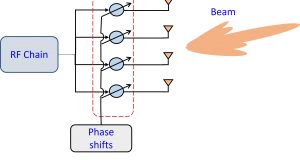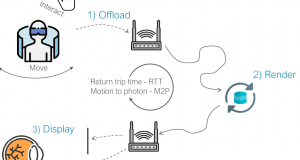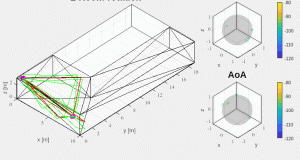Published on: Jul 30, 2021 Where to point the beam? – Local Area Networks (LAN) The earliest beamforming technique (Bartlett beamformer) dates back to World War II. Although beamforming techniques have advanced a lot since then, they have not been deployed in communication systems until recently. Beamforming is simply radiating or capturing energy from a specific direction using an array ...
Read More »Blog
Radio Detection and Ranging (RADAR)
Published on: July 19, 2021 All of us have heard about radar systems, such as military radars used for detecting and tracking aircraft or ships, as well as weather radars that identify the type of precipitation such as rain, snow or hail, and determine its motion and intensity. Apart from these applications, radars can also be used for monitoring vehicle ...
Read More »What is the future of mmWave and 5G?
Published on: July 5, 2021 5G networks are being widely deployed and we can take a realistic view of how this new technology can shape the world over the next 10 years. The advent of 5G is not only a generational step in wireless networks but it opens the door to the future of a fully connected world and possibilities ...
Read More »Every Millisecond Counts
Published on: Jun 25, 2021 Mankind has had to resort to online gatherings during the pandemic, as event venues, the hospitality sector, and even office spaces closed their doors to visitors. Whether partaking in a work related meeting, checking in on one’s loved ones, or enjoying a drink with friends in the evening, online is the place to be. However, ...
Read More »Have you ever heard (of) Beamforming?
Published on: May 28, 2021 In modern wireless communications, beamforming is a widely used technique to reduce the interference between multiple links and increase the signal-to-noise ratio. This technique can be interpreted as “pointing” the signal towards a specific device, but this definition is not always obvious and does not explain how it is done. To better understand this concept, ...
Read More »Channel Modeling Simulation for mmWave
Published on: May 21, 2021 Welcome to our latest blog. In this blog, we will discuss channel modeling in the mmWave frequency band. First, we will explain why channel modeling in mmWave is essential, and afterwards, we will describe how to use a Ray Tracer (RT) to model the channel. In the context of channel modeling simulations, we will introduce ...
Read More »Applications of mmWaves in 5G: Device Positioning and Localization
Published on: April 19, 2021 Welcome to our latest blog. In this blog, we will discuss one of the most promising applications that 5G and other mmWave technologies can offer: user device positioning and localization. Localization is the process of determining the location (position coordinates) of a user device in a given area. In general, localization with radio is done ...
Read More »Reconfigurable Intelligent Surfaces
Published on: March 29, 2021 The purpose of the MINTS project is to work on perfecting existing mmWave technologies and go beyond that to look towards the future, exploring new research areas that could be the basis for the next-generation wireless communications. Various groundbreaking technologies have been proposed for 6G, such as the use of Terahertz band, Visible Light Communications ...
Read More »MINTS Wireless Crossword
Published on: Feb 19, 2021 Welcome to our latest MINTS blog post. This time, we won’t be discussing about mmWave and 5G related topic. However, we would like to test your knowledge about wireless communication through an interactive MINTS Wireless Crossword. Let’s have a 10 minutes break to solve the crossword while enjoying a cup of tea or coffee. ...
Read More »Beyond 5G networks: How will our future look like?
EU MSCA ETN MINTS is happy to present an introductory video about their research, explaining about B5G applications and how they will impact our future daily life. We are all getting used to mobile video, useful for supporting our favorite applications from Netflix to YouTube to Zoom or Teams meetings. More is possible with digital communication technology, such as immersive ...
Read More »










